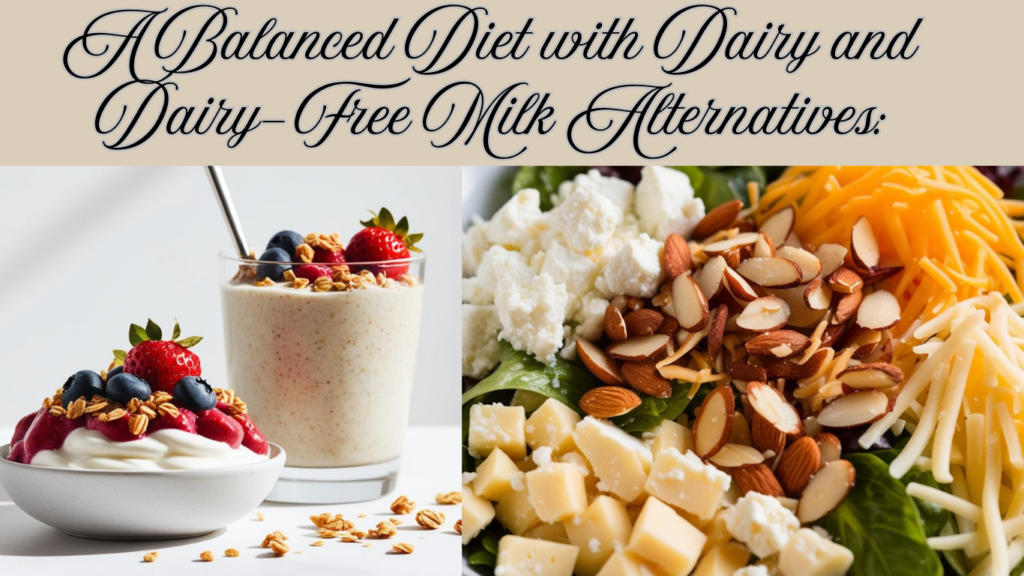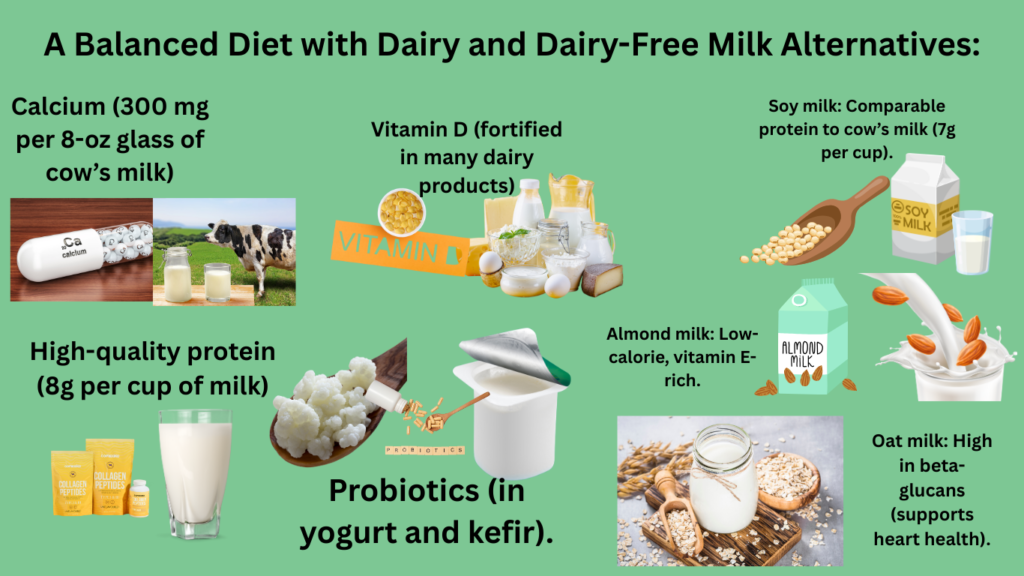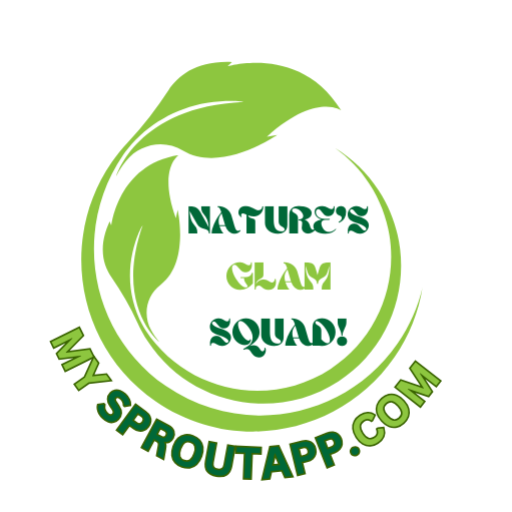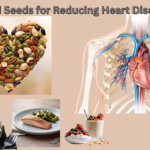
Introduction
Did you know that 65% of adults worldwide experience lactose intolerance, yet dairy remains a cornerstone of many diets? How can you maintain a balanced diet with dairy and dairy-free milk alternatives without sacrificing nutrition? This article explores the science, dispels myths, and provides actionable tips to optimise dietary choices. Exploring dietary decisions is essential, especially when nutritional restrictions and preferences are rising. With 65% of adults facing lactose intolerance, understanding the balance between dairy and dairy-free options becomes vital for maintaining optimal health. A balanced diet with dairy and dairy-free milk alternatives can help cater to diverse dietary needs.
Understanding dietary needs is essential, as many individuals experience lactose intolerance, which affects their ability to consume traditional dairy products. This article will delve deeper into the health benefits of a balanced diet with dairy and dairy-free milk alternatives, providing a comprehensive overview of achieving a balanced diet with dairy and dairy-free milk alternatives.
Adopting a balanced diet with dairy and dairy-free milk alternatives allows individuals to enjoy the nutritional benefits of various food sources while accommodating dietary restrictions.

The Role of Dairy in Nutrition
Key Nutritional Components of Dairy
Incorporating a balanced diet with dairy and dairy-free milk alternatives enriches your meals with varied flavors and nutrients.
Understanding the benefits of a balanced diet with dairy and dairy-free milk alternatives can empower individuals to make healthier choices.
A balanced diet with dairy and dairy-free milk alternatives provides essential nutrients while accommodating lactose intolerance.
Choosing a balanced diet with dairy and dairy-free milk alternatives ensures that you achieve your daily nutrient goals.
Moreover, cheese can be an excellent addition to meals, providing richness and flavor. For example, adding feta cheese to a salad can enhance taste and nutritional value by combining dairy protein with the fiber of mixed greens. Dairy products, such as yoghurt and chees, offer probiotics that benefit gut health. Yogurt, in particular, can aid digestion and enhance the immune system. This added benefit makes dairy a valuable component for those who can tolerate it.
Dairy products serve as a rich source of essential nutrients. For instance, milk is not only a source of calcium but also provides vitamin B12, which is crucial for nerve function and blood cell production. Understanding these nutrients can help individuals make informed dietary choices.
In today’s world, the conversation around dietary choices is more important than ever. Many people are exploring the benefits of incorporating various food sources, particularly concerning health conditions such as lactose intolerance and nutritional restrictions. Understanding how these dietary components interact can lead to improved health outcomes. A Balanced Diet with Dairy and Dairy-Free Milk Alternatives:
A balanced diet with dairy and dairy-free milk alternatives is not only nutritious but also offers flexibility for those with dietary restrictions.
Understanding Dietary Choices
The flexibility of a balanced diet with dairy and dairy-free milk alternatives allows for creativity in meal preparation.
Essential Nutrients from Dairy and Plant-Based Milks
Conversely, dairy-free alternatives, such as almond and oat milk, are often fortified to match the nutritional benefits of dairy. For example, many almond milks contain added calcium and vitamin D, making them suitable alternatives for avoiding dairy.
Always consider including a balanced diet with dairy and dairy-free milk alternatives to suit your nutritional needs.
Incorporating a balanced diet with dairy and dairy-free milk alternatives in your meals can enhance flavor and nutritional value.
Incorporating dairy products, such as yogurt and cheese, and plant-based options can create a more balanced meal. For example, adding cheese to a salad can enhance flavor and nutritional value.
Choosing a balanced diet with dairy and dairy-free milk alternatives can help you meet your calcium and vitamin D needs effectively.
Dairy provides essential nutrients that support various bodily functions, while plant-based milks can offer alternative sources of these nutrients. Recognising nutrient density and bioavailability differences is crucial for effective meal planning.
Incorporating a balanced diet with dairy and dairy-free milk alternatives can help you explore diverse flavors and textures.
To maintain a healthy lifestyle, consider a balanced diet with dairy and dairy-free milk alternatives that suit your taste and dietary needs.
Additionally, incorporating fortified plant milks can help individuals meet their dietary requirements, especially for calcium and vitamin D. Fortification ensures that plant-based options can serve as viable alternatives for those avoiding dairy.
Choosing the right dietary components can enhance overall well-being. Various health conditions and lifestyle choices compel individuals to explore different nutritional options, and understanding these choices helps make informed decisions Balanced Diet with Dairy and Dairy-Free Milk Alternatives:
The Importance of Dietary Variety
Challenging Common Misconceptions
Making Informed Choices
When selecting dairy or plant-based options, scrutinising labels is essential. Many plant milks contain added sugars that can detract from their health benefits. Opting for unsweetened versions ensures that you are making healthier choices. A Balanced Diet with Dairy and Dairy-Free Milk Alternatives:
Practical Suggestions for Your Diet:
To maintain a balanced diet, try incorporating dairy and dairy-free options. For instance, create a breakfast smoothie with Greek yogurt and almond milk, blending in fruits for added nutrients. This combination can provide protein, calcium, and healthy fats.
When comparing dairy and dairy-free milk alternatives, opt for those that contribute to a balanced diet with dairy and dairy-free milk alternatives to enhance your overall nutrition.
To achieve a balanced diet with dairy and dairy-free milk alternatives, include a variety of food sources in your meals.
Comparative Analysis of Nutritional Profiles
Considering the nutritional profiles, dairy contributes significant essential nutrients that support various bodily functions. Understanding the role of each nutrient can empower individuals to make informed choices.
When comparing dairy and non-dairy alternatives, it’s crucial to assess their benefits and how they complement each other. For instance, combining protein from dairy with the healthy fats found in nuts can lead to a satisfying meal that keeps you full longer.
Adopting a variety of food sources can enhance overall nutrition. For example, including different colored fruits and vegetables provides a broader range of vitamins and minerals. This concept is known as ‘eating the rainbow’. Each color represents different nutrients that are beneficial for your health. A Balanced Diet with Dairy and Dairy-Free Milk Alternatives:.
Mechanisms of Action: How Dairy and Alternatives Fuel Your Body
Nutritional Profiles of Dairy and Plant-Based Milks
Understanding Bioavailability
Bioavailability of nutrients plays a crucial role in dietary choices. For instance, the body absorbs calcium from dairy more efficiently than from some plant sources. Therefore, it’s essential to consider combinations that enhance nutrient uptake. A Balanced Diet with Dairy and Dairy-Free Milk Alternatives:
- Calcium (300 mg per 8-oz glass of cow’s milk
Vitamin D (fortified in many dairy products)
- High-quality protein (8g per cup of milk)
- Probiotics (in yogurt and kefir).
Dairy-free milk alternatives, such as almond, soy, oat, and coconut milk, offer varied benefits:
- Soy milk: Comparable protein to cow’s milk (7g per cup).
- Almond milk: Low-calorie, vitamin E-rich.
- Oat milk: High in beta-glucans (supports heart health).
A 2021 study in Nutrients found that fortified plant-based milks can match dairy’s calcium and vitamin D levels, but protein content varies widely.
Dairy products like milk, yogurt, and cheese are rich in:
Addressing Your Dietary Question
A Balanced Diet with Dairy and Dairy-Free Milk Alternatives:
Incorporating a balanced diet with dairy and dairy-free milk alternatives enhances overall meal satisfaction.
Q1: Can I get enough calcium without dairy?
Absolutely! Many plant foods, such as leafy greens, tofu, and fortified plant milks, can help you meet your calcium needs without consuming dairy.
Q2: How do I get enough protein with a dairy-free diet?
Incorporate a variety of protein sources, such as legumes, nuts, seeds, and whole grains, into your diet to maintain adequate protein levels.
Meal Planning Strategies
Effective meal planning can ensure a balanced intake of nutrients. For example, creating a weekly menu that includes dairy options on some days while featuring plant-based meals on others can promote variety and nutritional balance. A Balanced Diet with Dairy and Dairy-Free Milk Alternatives:
- Calcium (300 mg per 8-oz glass of cow’s milk)
- Vitamin D (fortified in many dairy products)
- High-quality protein (8g per cup of milk)
- Probiotics (in yogurt and kefir).
A balanced diet that incorporates dairy and dairy-free milk alternatives supports diverse nutritional needs.
Dairy-free milk alternatives, such as almond, soy, oat, and coconut milk, offer varied benefits:
- Soy milk: Comparable protein to cow’s milk (7g per cup).
- Almond milk: Low-calorie, vitamin E-rich.
- Oat milk: High in beta-glucans (supports heart health).
A 2021 study in Nutrients found that fortified plant-based milks can match dairy’s calcium and vitamin D levels, but protein content varies widely.
Bioavailability of Nutrients
Calcium absorption from dairy is 30–35%, while plant sources like fortified almond milk offer 20–30%, depending on fortification levels. Pairing vitamin C-rich foods (e.g., oranges) with plant-based iron sources (e.g., spinach) enhances absorption. A Balanced Diet with Dairy and Dairy-Free Milk Alternatives:
Enhancement of Nutritional Bioavailability
Combining foods wisely can enhance nutrient absorption. For example, incorporating vitamin C-rich foods with iron sources can improve iron absorption significantly. This is particularly crucial for those relying on plant-based sources for iron, as research shows that non-heme iron absorption can be increased by consuming it with vitamin C-rich foods (e.g., oranges), and plant-based iron sources (e.g., spinach) enhance absorption..A balanced diet with dairy and dairy-free milk Alternatives
Debunking More Myths
It’s essential to approach dietary myths critically. For example, while many believe that all plant-based milks lack protein, several options, such as pea and soy milk, provide protein levels comparable to cow’s milk. Educating oneself about these differences can lead to better dietary choices. A Balanced Diet with Dairy and Dairy-Free Milk Alternatives:
Common Myths vs. Facts
| Myth | Fact |
|---|---|
| “Dairy is essential for bone health.” | Fortified dairy-free alternatives provide comparable calcium and vitamin D (Journal of Nutrition, 2020). |
| “Plant-based milks are always healthier.” | Many contain added sugars; opt for unsweetened, fortified varieties. |
| “Lactose intolerance means avoiding all dairy.” | Hard cheeses and lactose-free dairy are often well-tolerated. |
Practical Tips for a Balanced Diet
Creating a balanced diet with dairy and dairy-free milk alternatives allows for a variety of meals.
Understanding how to maintain a balanced diet with dairy and dairy-free milk alternatives is essential for health.
Highlighting a balanced diet with dairy and dairy-free milk alternatives can lead to better dietary planning.
Environmental Considerations
Considering Environmental Impact
Understanding how to create a balanced diet with dairy and dairy-free milk alternatives can significantly impact your health.
When navigating dietary choices, consider a balanced diet with dairy and dairy-free milk alternatives for optimal health.
In today’s eco-conscious society, evaluating the environmental impact of your dietary choices is imperative. While dairy farming has challenges, many plant-based alternatives also require significant resources. Therefore, understanding where your food comes from is essential for sustainable eating. A balanced diet with dairy and dairy-free milk Alternatives
Several misconceptions surrounding dairy and dairy-free options can create confusion. For example, not all dairy is detrimental to those with lactose intolerance; many individuals can enjoy hard cheeses and lactose-free alternatives without issues.
Finally, a balanced diet with dairy and dairy-free milk alternatives is fundamental to nutritional health.
In summary, a balanced diet with dairy and dairy-free milk alternatives can be tailored to individual needs.
When choosing between dairy and plant-based options, consider their environmental impacts. Dairy farming has a significant carbon footprint compared to some plant-based alternatives. However, not all plant milks are created equal. For instance, almond milk requires substantial water resources, while oat milk is more sustainable. Making environmentally conscious choices contributes positively to the planet. A Balanced Diet with Dairy and Dairy-Free Milk Alternatives:
Understanding the differences between dairy and dairy-free milk alternatives is essential for a balanced diet with dairy and dairy-free milk alternatives.
With a balanced diet that includes dairy and dairy-free milk alternatives, you can enjoy a wide array of nutritious foods.
Practical Meal Ideas
Utilizing a balanced diet with dairy and dairy-free milk alternatives can improve meal variety.
Consider these meal ideas that blend dairy and dairy-free options: a smoothie made with Greek yogurt and almond milk, topped with berries and a sprinkle of chia seeds; or a salad featuring mixed greens, grilled chicken, shredded cheese, and a drizzle of almond-based dressing. These combinations promote a diverse intake of nutrients.
To create a balanced meal, consider incorporating both dairy and dairy-free products. For example, using a base of yogurt topped with a variety of fruits and seeds can yield a nutrient-rich breakfast that caters to different dietary needs.
Plan meals around a balanced diet with dairy and dairy-free milk alternatives to ensure comprehensive nutrition.
Balanced meals can be achieved through a combination of dairy and dairy-free milk alternatives.
1. Choose Fortified Alternatives
- Look for “calcium-fortified” or “vitamin D-fortified” labels on plant-based milks.
- Example: Silk Unsweetened Soy Milk provides 45% DV of calcium per cup.
By following a balanced diet that includes dairy and dairy-free milk alternatives, you can meet your health goals.
2. Combine Dairy and Non-Dairy Sources
- Use Greek yogurt (high protein) with oat milk smoothies (fiber-rich).
- Add cheese to salads alongside toasted almonds for crunch and calcium.
3. Read Labels Carefully
- Avoid products with “carrageenan” (linked to digestive issues) or excessive sugars.
4. Prioritise Sustainability
Oat milk uses 60% less water than almond milk (Science of the Total Environment, 2022).
Addressing Common Questions
A Balanced Diet with Dairy and Dairy-Free Milk Alternatives:
Q1: How do I ensure I get enough protein?
Incorporating diverse protein sources, such as legumes, nuts, and seeds, alongside dairy or dairy-free options, helps maintain adequate protein levels in your diet.
Q2: Are all dairy-free milks equal?
Not all dairy-free milks are created equal; some contain added sugars or are low in protein. Opting for unsweetened, fortified varieties ensures you’re making healthier choices.
Q3: Is soy milk safe for hormone-sensitive individuals?
Moderate consumption is safe. A 2019 review in Nutrients found no adverse effects from soy isoflavones.
Q4: Do children need dairy for growth?
While dairy supports growth, fortified plant milks can suffice if balanced with protein and healthy fats.
Q5: How can I ensure a balanced intake of nutrients?
Utilising food pairings that enhance nutrient absorption, such as iron-rich foods with vitamin C sources, ensures a well-rounded nutrient intake. Additionally, rotating between dairy and non-dairy options can enrich your diet.
Q6: What are the best dairy-free sources of protein?
Lentils, chickpeas, quinoa, and hemp seeds are excellent protein sources without dairy. Incorporating these into meals can help maintain adequate protein levels
Incorporating Dairy and Dairy-Free Options
Final Thoughts
A balanced diet with dairy and dairy-free milk alternatives offers versatility and richness in your diet.
To enjoy health benefits, aim for a balanced diet with dairy and dairy-free milk alternatives that cater to your preferences.
Incorporating a balanced diet with dairy and dairy-free milk alternatives is key to maintaining adequate nutrient levels.
Incorporating both dairy and dairy-free options raises several questions. Individuals may wonder about the best sources of protein or how to maintain calcium intake without dairy. These questions highlight the need for clarity in dietary choices. In conclusion, mindful choices make achieving a balanced diet with both dairy and dairy-free alternatives possible. By understanding the benefits and limitations of each, you can create a diverse and nutritious meal plan that meets your dietary needs while considering environmental impacts.
It’s common to have numerous questions regarding consuming dairy and dairy alternatives. Addressing these can help clarify any uncertainties about their roles in your diet and how to include them healthily.
Ultimately, the key to a balanced diet is mindfulness. By understanding your dietary needs and preferences, you can choose a combination of dairy and dairy-free products that meet your nutritional requirements and align with your lifestyle and values. Remember to consider the broader implications of your food choices, from personal health to environmental sustainability.
Key Takeaways
A balanced diet with dairy and dairy-free milk alternatives provides essential nutrients for health.
A balanced diet with dairy and dairy-free milk alternatives is achievable with mindful choices:
- Prioritize fortified, unsweetened options.
- Combine sources for complete nutrition.
- Debunk myths with science-backed facts.
By following a balanced diet with dairy and dairy-free milk alternatives, you can meet your nutritional requirements while enjoying diverse options.
Incorporating a balanced diet with dairy and dairy-free milk alternatives ensures you receive adequate nutrition.
Incorporating a balanced diet with dairy and dairy-free milk alternatives supports overall well-being and flexibility in meal planning.
Exploring a balanced diet with dairy and dairy-free milk alternatives can enhance your overall well-being.
Opting for a balanced diet with dairy and dairy-free milk alternatives can diversify your meal choices.
Implementing a balanced diet with dairy and dairy-free milk alternatives ensures nutritional adequacy.
Maintaining a balanced diet with dairy and dairy-free milk alternatives can lead to a healthier lifestyle.
Ultimately, achieving a balanced diet with dairy and dairy-free milk alternatives is key to maintaining a healthy lifestyle.
Emphasising a balanced diet with dairy and dairy-free milk alternatives can clarify your dietary choices.


